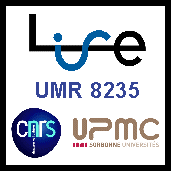Elucidating water chemistry effects on electrochemical nitrate reduction: effect on product selectivity and reduction kinetics
Résumé
Nitrate is among the most common groundwater pollutants in the world. Anthropogenic activities such as the use of fertilizers are the main contributors to the dramatical increase of nitrate in water sources. Concentration of nitrate over the maximum concentration level in drinking water causes a wide range of severe health problems such as cancer and methemoglobinemia. Current physicochemical methods remove nitrate from water effectively but generate a concentrated waste steam with high nitrate content. Electrochemical conversion of nitrate into innocuous nitrogen gas it is a promising approach to rebalance the natural nitrogen cycle while depolluting nitrate-laden water sources. Experimental studies in synthetic solutions highlight the competitiveness of electrocatalytic reduction as decentralized and user-friendly technology. However, little is known on the electrochemical performance on the treatment of natural water matrices.
This work explores the effects of water chemistry and co-existence of other soluble species on the performance of electrochemically driven nitrate reduction. Electrochemical treatment using tin cathode was evaluated maintaining operational variables (i.e., nitrate concentration, electrocatalytic material, applied current density) but under different water compositions including: (1) synthetic solutions commonly reported in research works; (2) solutions containing other ions beyond nitrate with common concentrations found in groundwaters, (3) synthetic groundwater, (4) real brackish water, and (5) real brine water. Nitrogen conversion and Faradaic efficiency were affected by some water matrix components. The presence of isolated coexisting ions with nitrate decreased nitrate conversion from 75% to 28 % in the following influential sequence PO4- < Ca2+ < HCO3- < SiO2 < F- < Cl- < Mg 2+. Whereas the combination of all species in a synthetic groundwater illustrated a dramatic decrease in removal down to 20 %. Magnesium (II) was identified as the most detrimental coexisting species. Furthermore, the study of electrode surface after the treatment detected the precipitation of magnesium salts. Consecutive experiments with real waters showed that pre-treatment of softening significantly increases removal percentage and Faradaic efficiency. Inorganic scaling is identified as a barrier to overcome when considering interfacial electrochemical approaches for oxyanion remediation. Further in-depth research on water compositions and mechanisms of electrode fouling and poisoning is required in order to overcome possible challenges on the treatment of natural waters.

